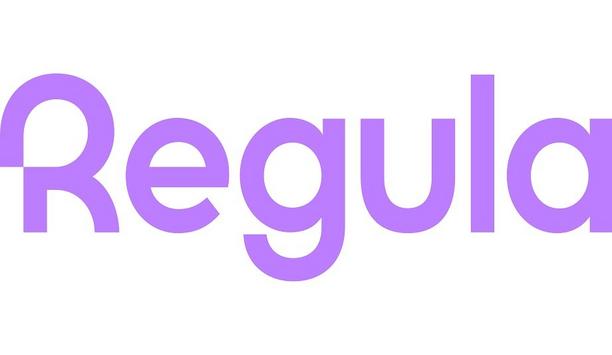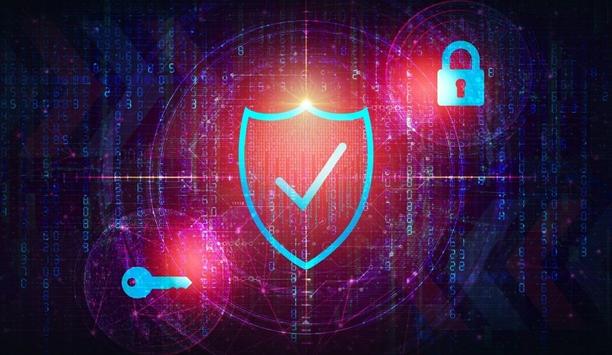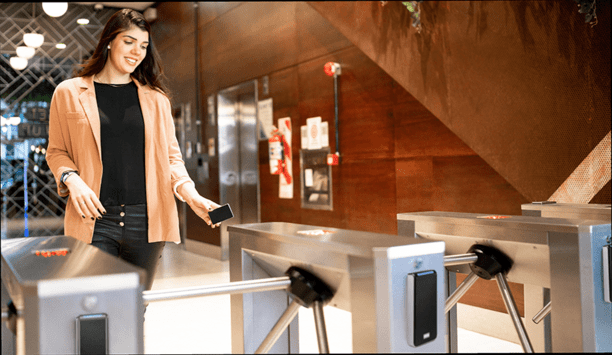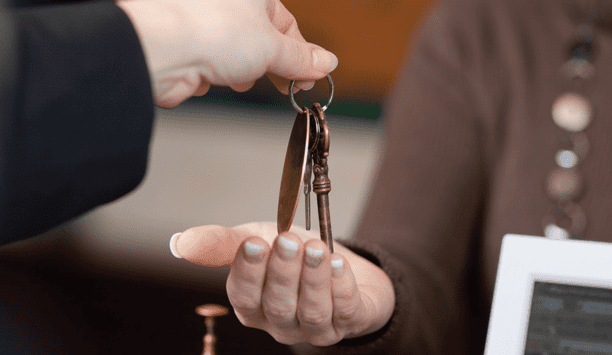Regula Forensics (Regula) - Experts & Thought Leaders
Latest Regula Forensics (Regula) news & announcements
Regula, a global developer of forensic devices and identity verification solutions, now has 15,000 templates in its identity document template database, the most comprehensive in the world. This significant update ensures that businesses and government agencies around the globe can verify the latest IDs, including the most advanced biometric documents, with the highest accuracy. Global ID verification simplified Incorporating ID templates from 251 countries and territories and capable of reading 138 national languagesRegula’s proprietary identity document template database contains detailed descriptions of each document’s security features. Combined with the advanced capabilities of Regula Document Reader SDK, this enables online ID verification with the same level of precision previously achievable only in on-site scenarios. Incorporating ID templates from 251 countries and territories and capable of reading 138 national languages, this database enables the recognition and proper verification of nearly every ID from any corner of the world, even the rarest ones. Tracking global shifts in identity documents The latest expansion of Regula’s ID template database reflects the global shift towards more sophisticated identity documents. More and more countries are introducing biometric passports, which are considered the most secure at the moment. For example, among the recent additions to Regula’s database are the first-ever biometric passports issued by India, Sri Lanka, and Guyana. Apart from the format, documents’ security features are also becoming more complex and elaborate. First and foremost, ID issuers are switching from paper substrates in favour of polycarbonate pages, which are much harder to counterfeit. For this reason, states like Benin, Burkina Faso, Chile, and Djibouti have recently issued new IDs with polycarbonate data pages. Advanced ID security features MLIs significantly enhance document protection with hard to illegally duplicate by designAnother advanced security feature that has become quite widespread across different identity documents is the Multiple Laser Image (MLI). An MLI embeds two distinct images within a document. Typically, these include the passport holder’s photo and their personal data. Special lenses positioned above the images can visualise either image clearly by tilting the document. Hard to illegally duplicate by design, MLIs significantly enhance document protection. Among the IDs that were added to Regula’s ID template database with the latest update, the US driver’s licence from Wisconsin, as well as the ID cards of Jamaica, San Marino, and Yemen contain such security features. Combating fraud with precision “The growing complexity of identity documents presents notable challenges for ID verification workflows. Businesses and government agencies must be prepared to properly verify all the document security features so as not to miss any forgery or identity fraud attempts.” “Furthermore, they have to handle multiple ID versions from the same country simultaneously, as many older documents remain in circulation alongside the new formats. By keeping pace with evolving security features and document standards, we help streamline ID verification workflows, reduce fraud risks, and maintain compliance with global regulations,” says Ihar Kliashchou, Chief Technology Officer at Regula. Expanding global ID coverage Among the new IDs added to Regula’s database to hit 15,000 templates are the following, issued in 2024-2025: Passports: Azerbaijan Benin Burkina Faso Burundi Chile Djibouti Germany Guyana India Kosovo Malawi Myanmar Netherlands Romania Saint Kitts and Nevis Slovakia Sri Lanka Tajikistan ID cards: Argentina Bosnia and Herzegovina Chile Guatemala Jamaica Kazakstan Kosovo Netherlands Nigeria Norway Philippines Puerto Rico San Marino Slovakia Somalia Sri Lanka Vietnam Yemen Driver’s licences: Azerbaijan Denmark Honduras Iran Kosovo Mongolia Puerto Rico Slovakia Sweden Venezuela Bolivia US states: Michigan, Mississippi, New Hampshire, North Carolina, Tennessee, Wisconsin
Regula, a developer of forensic devices and identity verification solutions, brought document verification to the catwalk at the annual Intergraf Currency+Identity conference. Regula’s molded lenses, magnifiers, and optical filter turrets became key design elements in a fashion show featuring iconic Milanese characters: the office worker, the curious tourist, the street performer, and the child eating gelato. Document verification solutions Intergraf conference connects technology developers with a range of institutional corps The Intergraf Currency+Identity conference connects technology developers with a range of institutional organisations, such as security printing companies, central banks, and law enforcement agencies from all over the world. Responding to the rising need for robust document verification solutions, Regula presented various devices, from compact magnifiers to full-scale video spectral comparators. Magnification of IDs’ security features While small devices provide high-quality magnification of IDs’ and banknotes’ security features to examine their authenticity, advanced equipment (such as the High-Resolution Photospectral Scanner Regula 88XX) allows for the most detailed inspection of all sorts of documents, as well as collectibles and art objects. Sharing its passion for art and creativity, Regula was honoured to contribute to the fashion defilé held on the opening day of Intergraf Currency+Identity. Partnered with NABA The conference organisers partnered with NABA, an art and design academy in Milan The conference organisers partnered with NABA (Nuova Accademia di Belle Arti), an art and design academy in Milan, to launch a creative project titled “A Pocket Full of Milan.” Within this project, young designers developed several fashion outfits representing typical street characters of the city, such as an office worker, a policeman, a fashionista, a commuter, and a tourist. The icing on the cake: the central character of this lineup was a pickpocket who stole costume parts from other characters while they were walking the catwalk, and ended up as the most dressed-up one. Document security features To create two of these outfits, NABA’s students chose the spare parts that Regula uses to manufacture its devices. For example, Regula’s in-house molded lenses (generally used to enable the anti-Stokes effect for examining document security features) became suit embellishments of the costume of a true Milanese office worker, or Office Siren, as it was called by the creators. Regula’s video spectral comparators Regula’s video spectral comparators to create the right light source for precise document review Additionally, magnifiers that were provided by Regula turned out to be a handy tool for a tourist perusing a city map. Finally, optical filter turrets that are used in Regula’s video spectral comparators to create the right light source for precise document examination appeared as vibrant outfit accessories for two more Milanese characters: the street performer and the child eating gelato. Innovative identity verification solutions “At Regula, we believe technology and creativity go hand in hand. Developing new technologies is always a creative process—it requires imagination, experimentation, and a willingness to see possibilities beyond the obvious. That’s why we were especially excited to support the artists at the Intergraf Currency+Identity fashion show. Just as we push the boundaries of forensic technology to develop innovative identity verification solutions, artists push creative boundaries to bring new ideas to life." "Seeing our precision-engineered components transformed into fashion pieces was a perfect reflection of this shared spirit of innovation. It was an honour to be part of an event that celebrates both technical excellence and artistic expression,” says Alex Lewanowicz, Director of Hardware Engineering at Regula.
With its latest update, Regula Document Reader SDK, a comprehensive software solution for identity document verification, ensures 100% support for the new ISO/IEC 39794-5 standard regulating the methods of facial data storage and verification in e-passport chips. According to the ICAO guidelines, all document readers and verification systems must be compatible with the new standard by 2026, with passport issuers required to fully adopt the new format by 2030. ISO/IEC 19794-5:2005 standard The ISO/IEC 39794-5 standard introduces an enhanced framework for facial image data, significantly improving interoperability, processing speed, and recognition accuracy across different identity verification (IDV) systems worldwide. Unlike the previous ISO/IEC 19794-5:2005 standard, which primarily stored a basic facial image, the new format records additional metadata, including detailed facial landmarks, precise eye and hair colour, and other biometric attributes. Why this matters The richer set of pre-stored reference points eliminates the need for separate face detection The richer set of pre-stored reference points eliminates the need for separate face detection and feature extraction during verification. Instead of calculating key facial points from scratch, IDV systems can use the pre-recorded metadata, accelerating processing times and ensuring consistent, high-quality recognition results—regardless of the local algorithm used for comparison. This standardisation guarantees that a person’s face in their passport will be consistently and accurately verified across different countries, improving global interoperability. Framework for future extensions Apart from that, the ISO/IEC 39794-5 standard implements a flexible framework for future extensions. This means that as new attributes or enhancements are introduced in the future, all systems supporting this standard will remain fully functional without requiring urgent updates—unlike the current situation, where all IDV systems would need to be updated to accommodate new data formats. Regula’s long-standing expertise Regula’s expertise in secure RFID chip reading and trustworthy data verification ensured smooth adaptation Although the current ISO/IEC 19794-5:2005 will remain valid, the industry has started the transition period, and businesses worldwide should be ready to process the new format data before 2026. Regula’s long-standing expertise in secure RFID chip reading and trustworthy data verification ensured smooth adaptation to the new standard even prior to its coming into force. Identity verification systems The company’s participation in the recent testing event in Australia demonstrated its ability to correctly extract, interpret, and verify biometric facial data encoded according to ISO/IEC 39794-5. This means that identity verification systems using Regula’s software are future-proofed against compatibility issues that could arise as countries transition to the new format. Transition to the new standard Regula's IDV software is compatible with document readers on the market and can be easily used In addition, the new standard will require organisations from banks to border control to update their passport readers with software that fits this standard. Regula's IDV software is compatible with most document readers on the market and can be easily used with any device model. This implies a seamless transition to the new standard without replacing existing hardware, ensuring a cost-effective and hassle-free upgrade. Efficiency in biometric verification “The shift to ISO/IEC 39794-5 is a major step forward in improving compatibility and efficiency in biometric verification. With more detailed metadata now embedded in e-passports, identity verification systems can achieve faster processing and more accurate recognition results." "Our expertise in RFID chip processing ensures that Regula’s technology is already fully equipped to support this transition, providing organisations with seamless, future-proof solutions that help them stay in line with regulatory changes,” says Ihar Kliashchou, Chief Technology Officer at Regula.
A modern guide to data loss prevention
Download7 proven solutions for law enforcement key control and asset management
DownloadThe truth behind 9 mobile access myths
DownloadAccess control system planning phase 2
DownloadSecurity practices for hotels
Download











